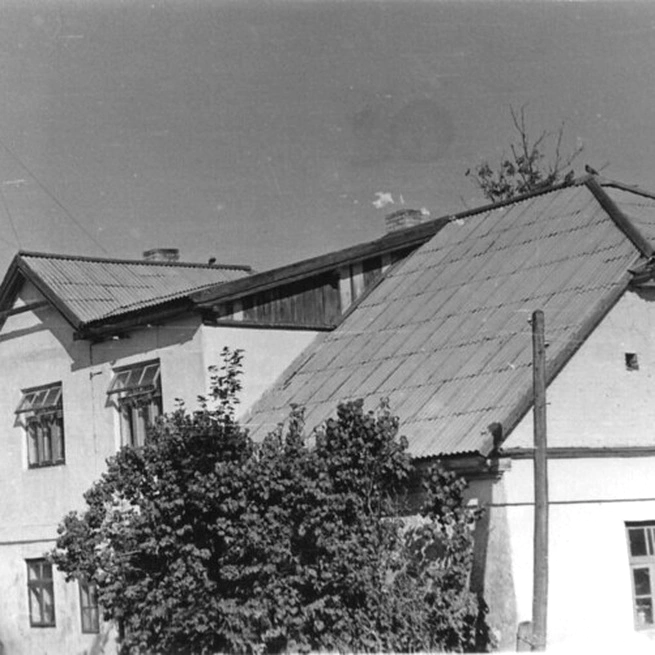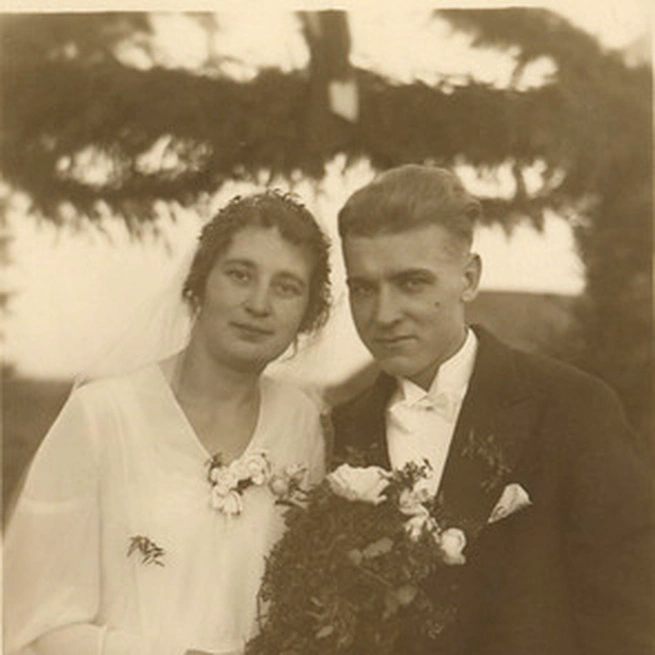At the onset of winter I had made a gun of ½ centimetre metal pipe (using Russian cartridges.) I straightened the then end and made it a hunting gun. Powder and other things could be bought. Arturs had a real hunting rifle. That year there were a lot of squirrels; they were everywhere that firs grew, eating the seeds from the cones. The skins could be sold for 3 lati, which was a days’ pay for a labourer. By walking around the different areas I could shoot 2-4 every day, which was very good money. It was illegal to shoot them, but when it is necessary you can do anything. With my illegal earnings I saved 30-40 lati. My dream was to go to Riga and work during the day and study at night at the technical college. After Christmas I decided to do it. Until this time I did not even have an overcoat, so I had one made from a rough, home made material. I packed my belongings in a home made box like a suitcase with a lock. My belongings consisted of what mother gave me: a small cushion, a thin blanket, and one sheet. My oldest brother, after all my summer work, refused to give me anything saying, “You are just going in the world to become a thief.” I decided that I would never come home to the farm again because it could not be worse than anywhere else. At least I could always work for food.
Jan 22, 2010
One day the old landlady said that the baker downstairs was looking for an apprentice. The work was only at night, starting at 4 PM and through the night until 8 AM (16 hours.) I worked with the baker making bread rolls. They were put in the oven in one end and taken out at the other end. The rolls were put on wooden platforms, covered with a linen fabric, and put near the ceiling to rise. My job was called “smuli.” I was in a rush most of the time: grab the platforms from the ceilings, then the baker puts them on slides like very long skis, then slides them in on the stone floor in the oven. The ovens were heated before use by wood to a temperature of 30 celsius. I slept and ate during the day in a little room above that I shared with another youth from the country. The food was very good but the wages were only 10 lati a month (approx. $10AUD) I wanted to explore Riga. After breakfast I would think to go on an hours’ walk, but often returned just in time for work at 4 PM. It was very hard. I was so sleepy that as soon as I stopped moving, I fell asleep. I struggled like this for 4-5 months. Spring was coming and I decided that being a baker was not for me.
Jan 23, 2010
After 2-3 days I received a letter telling me that I was to start at Valena factory. I told the bakery boss that I was leaving for another job. He was very angry that I had exploited him, but I think it was the other way around. I had been working 16 hours a day. I was not sorry to leave the bakery; even though I had passed the winter in the warmth there and had been well-fed. At that time, after the war, there were no regulations about employment; the bosses could do as they pleased and there were no unions. Also, there were no holidays and I worked six days, except on Saturdays as there was no fresh bread on Sundays.
Jan 24, 2010
I was now familiar with Riga and went back to the kind, old landlady for accommodation. She was very pleased to see me and my friend from Aizpute was still there.
Jan 25, 2010
It was spring – May – I gave notice and went to Riga to register at the milk factory authority. The manager there was Kersela, who had been a manager himself for many years. He was like a father to me – very friendly and helpful. He suggested that I take a few weeks holiday until a good job comes along as a manager’s assistant. I went home to Digaini, my oldest brother now respected me as an equal. I caught up on sleep and helped with some jobs.
Jan 27, 2010

I arrived at Snepele in June, 1930. I first stayed at Strautmali because the outgoing manager had not yet left. Passing through Riga, I went shopping. I bought a dark blue suit, pale slacks, and white shoes, which were the latest fashion. And I had my record player.
Jan 31, 2010

About two weeks before the wedding, Milda was working at a neighbour’s at milling when she got a cold. She had a fever but we went to Riga to buy the wedding rings, wedding dress, a coat, and an evening suit for me. Milda was taking all sorts of powders. Her temperature would go down immediately but later would be even higher. When we got home she went to bed and the doctor advised that the wedding had to be postponed for a month, which we did. (A: She had rheumatic fever, which damaged a heart valve and caused problems for the rest of her life). We had to notify all of our friends and relatives. Even a month later she was not very fit, so I hired a car-taxi as I was afraid she would catch a cold again. The car drove very slowly so that the horse carriages could follow, there were about 10. Along the route there was a number of honour arches, which was a custom in the country (a house high arch was constructed and covered with foliage and flowers). We had to stop at these arches and leave a bottle of drink.
Feb 3, 2010

At Vandzene, the factory was in a bad condition; dirty and a lot of the equipment was out of order. The manager said that nothing could be done as it was impossible to get any parts or repairs. With my previous experience at Snepele I knew that if I went in person with some butter I could get it, rather than leaving it to the committee. This way I could get anything that was in any of the warehouses so I took a truck and filled it with everything needed. I had the whole place whitewashed and all the machinery fixed so that we could really start producing.
Feb 12, 2010